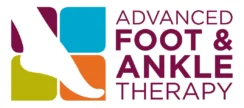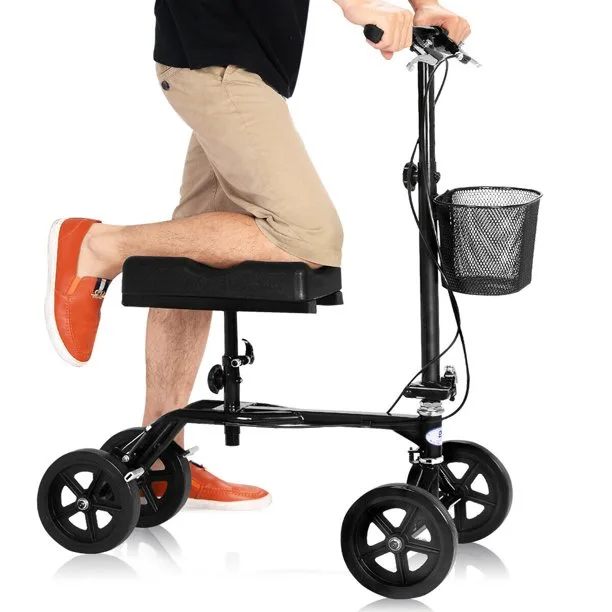When I recently underwent forefoot surgery at the same time as one of my clients, our discussions lead to this ultimate compilation of tips for achieving the best recovery.
As a physiotherapist specialising in the foot & ankle I have long been aware of the need for good advice on how to prepare your body and your home before your foot surgery to help you minimise pain, swelling and inconvenience and to get the best outcome in your recovery. The more you can think through what you may need and arrange it beforehand the better.
Preparing your body
Pre-hab
If you are having foot surgery you have probably been hobbling around for quite some time. The body automatically adjusts your walking pattern to unload the painful area, but this is often at the expense of other areas which become overloaded and painful. It is not uncommon for people with chronic foot pain to experience recurrent pain in the ankle, knee, hip, lower back and the other foot. Following surgery your walking pattern may be further compromised. To help your body adapt better and with greater comfort during the post-operative period , it is advisable to have a few physiotherapy treatments pre-operatively. This also provides a great opportunity for you to discuss any issues or concerns you may have about your recovery, such as using mobility aids.
Getting around
The type of walking aid you may require will also have an impact on the rest of your body and will be determined by whether you will need to be non-weight bearing or partially weight-bearing, how good your balance is and any other issues you may have in the upper limbs which may affect your ability use a walking aid. Using a walking stick, underarm or elbow crutches or walking frame places a lot of load on your trunk hips, neck and upper limbs. A discussion with your physiotherapist regarding your physical limitations will help you select the appropriate walking aids for your needs. It is advisable to acquire the type of aid you are going to use at least one week prior to surgery so you can practice at home. You should be trained in how to use these aids safely before your surgery.
If you will be non-weight bearing for six weeks after surgery you may need to do some pre-operative shoulder strengthening and post-operative shoulder stretching. If you do use crutches or a walking frame for a prolonged period of time you will need some physiotherapy or remedial massage therapy to alleviate any resulting stiffness in your trunk hips and shoulders and neck.
If using a walking stick makes you feel old, check out these swanky adjustable height folding walking sticks from Switch Sticks. Everyone will be asking where you got it from! The ideal height for the stick is where the handle is level with the bump on the side of your hip, known as the greater trochanter.
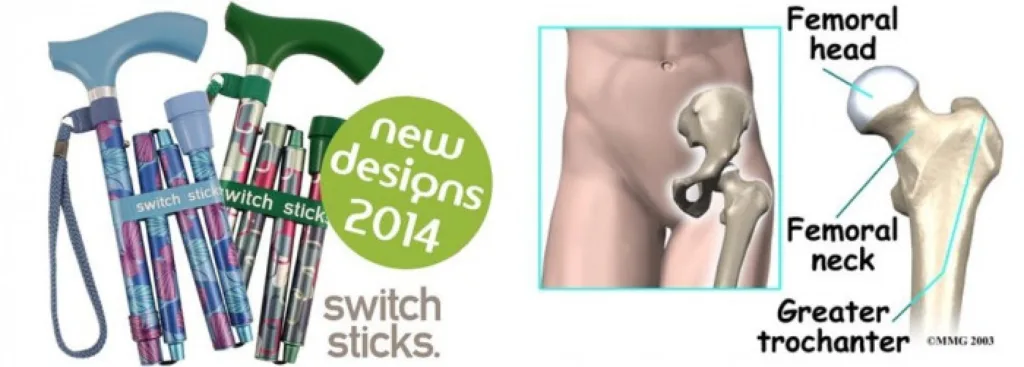
All crutches are not the same. The forearm crutches are the least stable option. If you don’t have good stability in your elbows you will need to use the more stable underarm crutches. If your balance is compromised you may need a walking frame which is the most stable option.
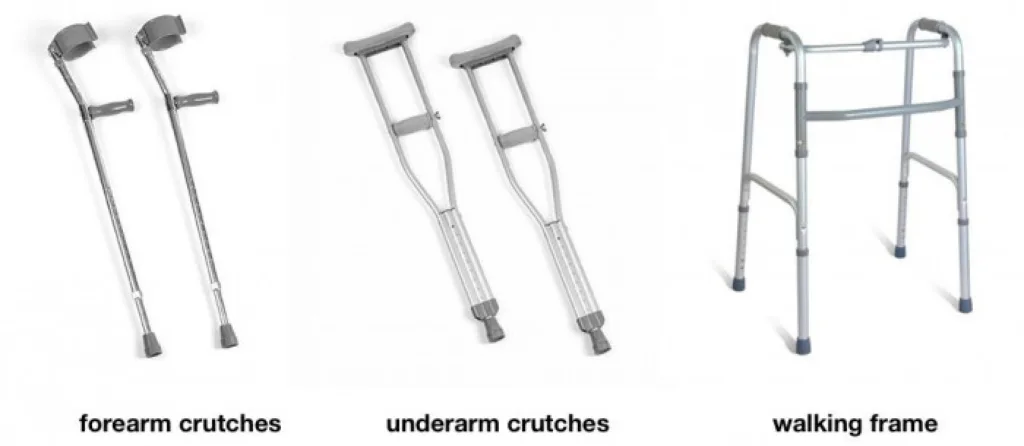
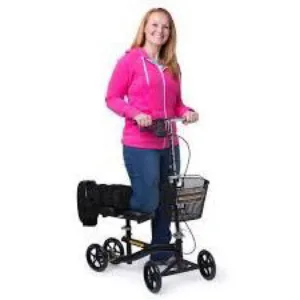
- The knee walker scooter is an excellent option for non-weight bearing that minimises the impact on the rest of the body, as weight is borne evenly through the hips and trunk and there is less pressure on the arms, shoulders and other leg. Ensure the height of the kneeling pad is adjusted so that your hips are level. To use the scooter safely do not go any faster than a slow walking pace and take only a single step at a time. Don’t glide larger distances on the scooter as this increases your chance of an accident if a wheel catches on uneven ground. Keep a careful eye out for obstacles or uneven surfaces ahead of you. The scooter has hand brakes which are important for safety when on slopes. The scooter can also be used as a foot rest when sitting down.
All walking aids, including the knee walker, are available from Gillespies medical supplies at Artarmon and can be delivered in the Sydney metropolitan area, or contact your local medical supplier
Disabled parking permit
Arranging a two month disability permit with your GP prior to your surgery will make it easier for you or other drivers to get closer to where you need to go, including for your post-operative consults. While you won’t be able to drive if your right foot is affected, it may still be worthwhile arranging a permit so that someone else can drive you to appointments. Taking your GP signed form to the RTA office is the fastest way to obtain one and they can be provided on the spot.
Lymphatic drainage massage
Swelling in the foot is the hardest to resolve due to the effects of gravity and the distance of the foot from the heart. The lymphatic system works with your circulatory system to drain fluid away from the limbs and needs to be functioning well prior to surgery so that drainage of fluid the operated area is not impeded. The lymphatic system is an important vehicle for the immune system which assists the body to heal and fight infection. Lymphatic drainage massage is a very gentle technique which can help restore efficient lymphatic function and can have surprisingly powerful effects. If your lymphatic system is congested you might feel tired, achy or have flu-like symptoms and pass a lot of water after treatment. Having one or two pre-operative lymphatic drainage treatments by a suitably qualified practitioner can make a huge difference to your post-operative swelling and tissue healing. This is a bit like “clearing the drains before the storm”. A follow up treatment post-operatively is also advised.
- Catherine Boller or Tomoko Yano at Mosman Massage Therapy
- Michael Alcott at Sydney Complimentary Health Sydney CBD
Reducing Swelling
To most effectively reduce swelling in your foot during the post-operative period you need to elevate your foot higher than your heart while lying flat for 20–30 minutes at a time. Using a contoured drainage pillow ensures even contact pressures in the lower leg which assists drainage of fluid from the leg and foot. Moving the foot or toes up and down whilst elevated will also assist the circulation and drainage of fluid. Avoid alcohol as this causes dilation of the blood vessels and increases swelling. Keep the leg elevated whenever you are lying or sitting with the lower back supported and avoid standing for more than a few minutes at a time.

Contoured leg drainage pillow
Compression Stockings and leggings
You may have been fitted with some white ted stocking in hospital to assist your circulation and prevent blood clots. It is a good idea to continue using these when you get home. Once the bulky bandages have been removed you can also use flight socks to minimse swelling in the foot and ankle. These are also great to use regularly in the later stages of your recovery as swelling can take 6-12 months to fully resolve. Ask your pharmacist on help you chose the right size as you will need to measure your calf girth
Pedal exerciser
Being sedentary for prolonged periods following foot surgery increases your risk of developing a deep vein thrombosis ( DVT). Increasing your leg movement regularly will not only help prevent DVT but help you reduce swelling in your leg and foot and maintain some muscle tone in your calves and legs. A pedal exerciser is an ideal way of doing this and can be used from your lounge chair.
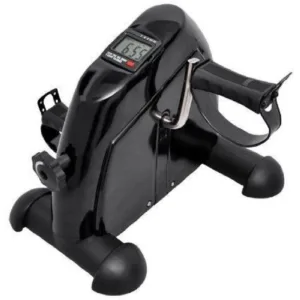
Prepare your activities and meals
Preparing relaxing activities for your down time prior to your surgery and having what you need close at hand will make this transition much easier for you and anyone who is assisting you in your recovery. Make sure you have some good books, music , DVD’s , devices charged and healthy snacks of fresh fruit handy. If you live alone, stockpile the fridge or freezer with soups and microwaveable pre-cooked meals. Think about eating twice a day with a late breakfast and early dinner as you will be using less energy and will be sleeping more. It also means less work.

Tray Table or book seat
A tilting tray table is ideal for reading or writing whilst reclined with your foot elevated, and can be easily adjusted back to the flat position for meals or using a laptop. Make sure your back is supported with a comfortable cushion. A book seat is also a great option for reading to avoid straining your neck.
- Gillespies Medical Hire Artarmon or search medical supplies in your local area
- Book Seat
Bathing
Not only will you need to keep your bandages dry when showering, you will also need to keep off your foot by showering sitting down and be safe from slips or falls.
If your shower is over a bath, you can hire an adjustable bathboard from a medical supplier and purchase a shower hose to attach to the bath tap from Bunnings for less than $15. For a regular shower a bath seat is advised for safety and should have a non-slip surface, rubber feet and be height adjustable.
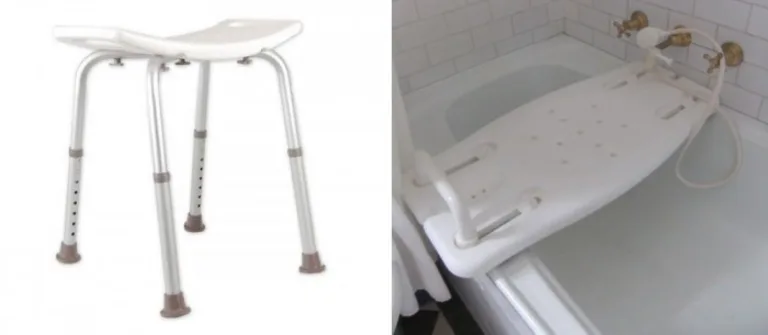
Shower seat or adjustable width bathboard with shower hose
- Gillespies Medical Hire Artarmon or search medical supplies in your local area
Cast protector “Seal tight”
This brilliant self sealing cast protector works a treat to keep bandages dry and beats fiddling with plastic bags and tape that usually leak.
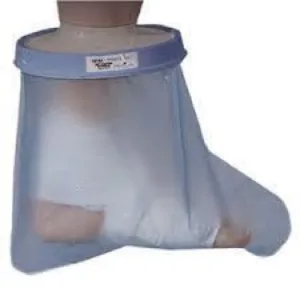
Shoes
Shoes for the unaffected foot
If your foot needs to be immobilised, you will be fitted with a post-op shoe or a boot at surgery which can raise the height of your foot by up to 4 cm. The other shoe needs to have a similar height so that your hips are even to avoid straining your hips and lower back. The post-op shoe pictured was used after my bunion surgery and has a 4cm high heel.
Some options are to purchase a pair of Fitflop sandals prior to your surgery which are 4cm in heel height and will be protective of the forefoot when normal walking resumes. They are easy to slip on to use as a slipper when wearing the post-op shoe on other foot.
Another option is the evenup shoe balancer over a regular shoe.
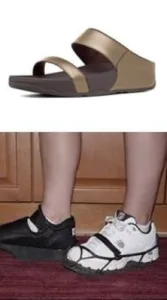
Shoes for when you come out of the boot
When your foot comes out of the post-op shoe or boot you may have some residual swelling and may find that none of your shoes fit that foot. Having a pair of multipurpose shoes with elasticised uppers can solve this problem, such as these Sketchers shoes.

Skechers are available from Myer or Sketchers stores
I hope these tips help you achieve a speedy recovery and an outstanding result from your foot surgery and a happy body to go with it.
